Matlab:数模04-图论模型(dijstra算法)
Posted fxalll
tags:
篇首语:本文由小常识网(cha138.com)小编为大家整理,主要介绍了Matlab:数模04-图论模型(dijstra算法)相关的知识,希望对你有一定的参考价值。
一个简单的例子
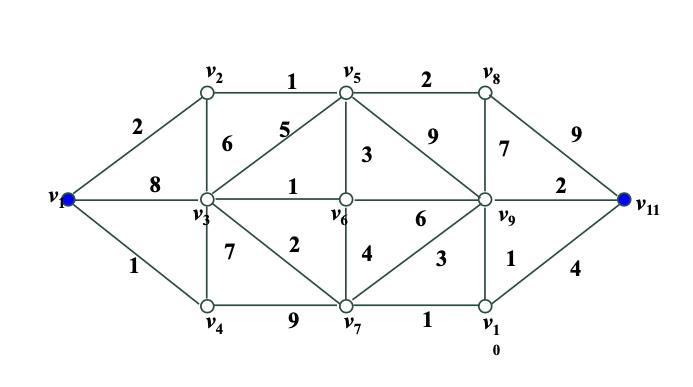
假设每个数字代表的都是点与点之间的距离。我们从v1出发,v11为终点。要如何走才能使路程最短?
dijstra算法简介与例子计算
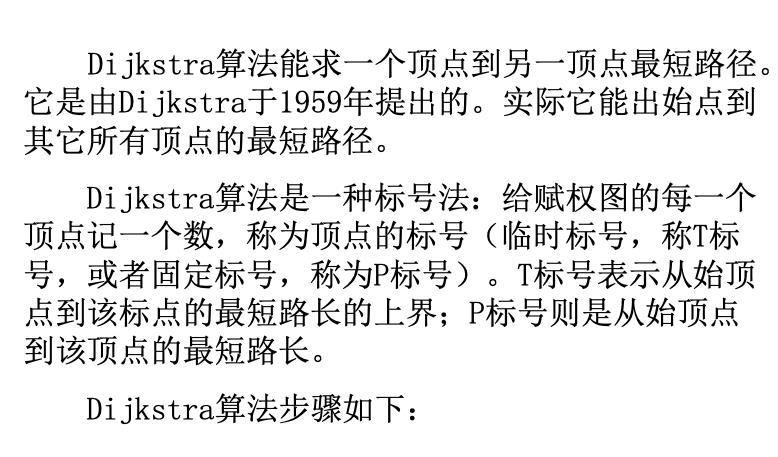
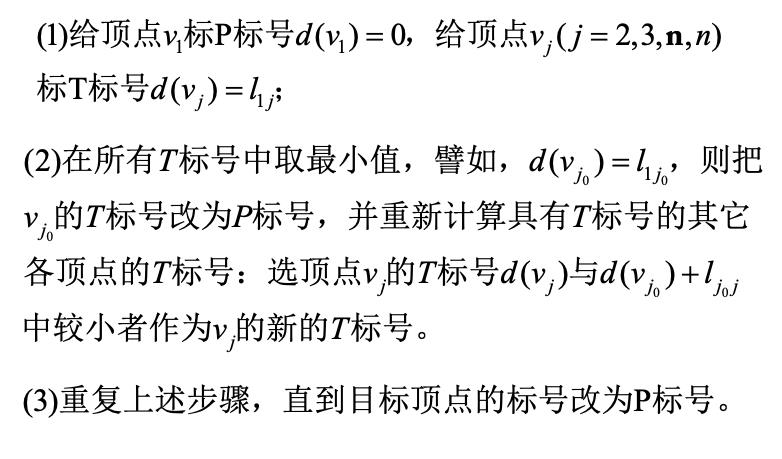
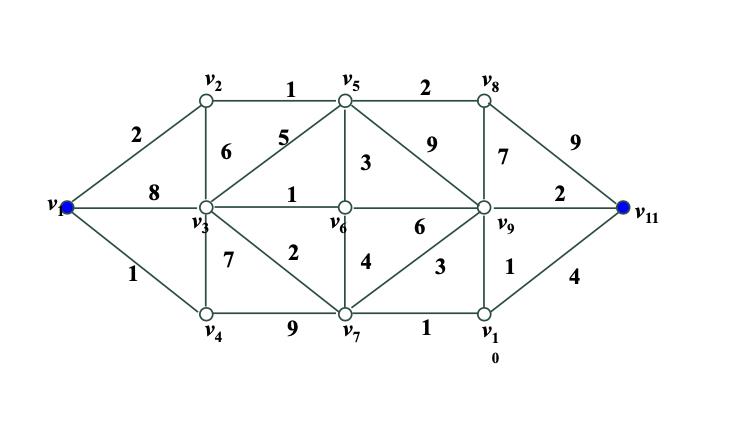

首先先写出各点距离v1的距离,然后走最短距离的那个点。
第二步走到v4,得到v1到v3、v7的距离,比较后决定第二步走v2,得到v1到v3、v5的距离,找最短距离。
第三步走到v5,得到v1到v3、v6、v8、v9的距离,找最短距离。
第四步走到v8,得到v1到v9、v11的距离。我们发现距离都挺长的,于是我们尝试回到v6,得到v1到v3、v7、v9的距离,找最短距离。
第五步走到v3,得到v1到v4、v7的距离,找最短距离。
第六步走到v7,得到v1到v9、v10的距离,找最短距离。
第七步走到v10,得到v1到v9、v11的距离,找最短距离。
第八步走到v9,直接走到v11。
以下为步骤图形化:
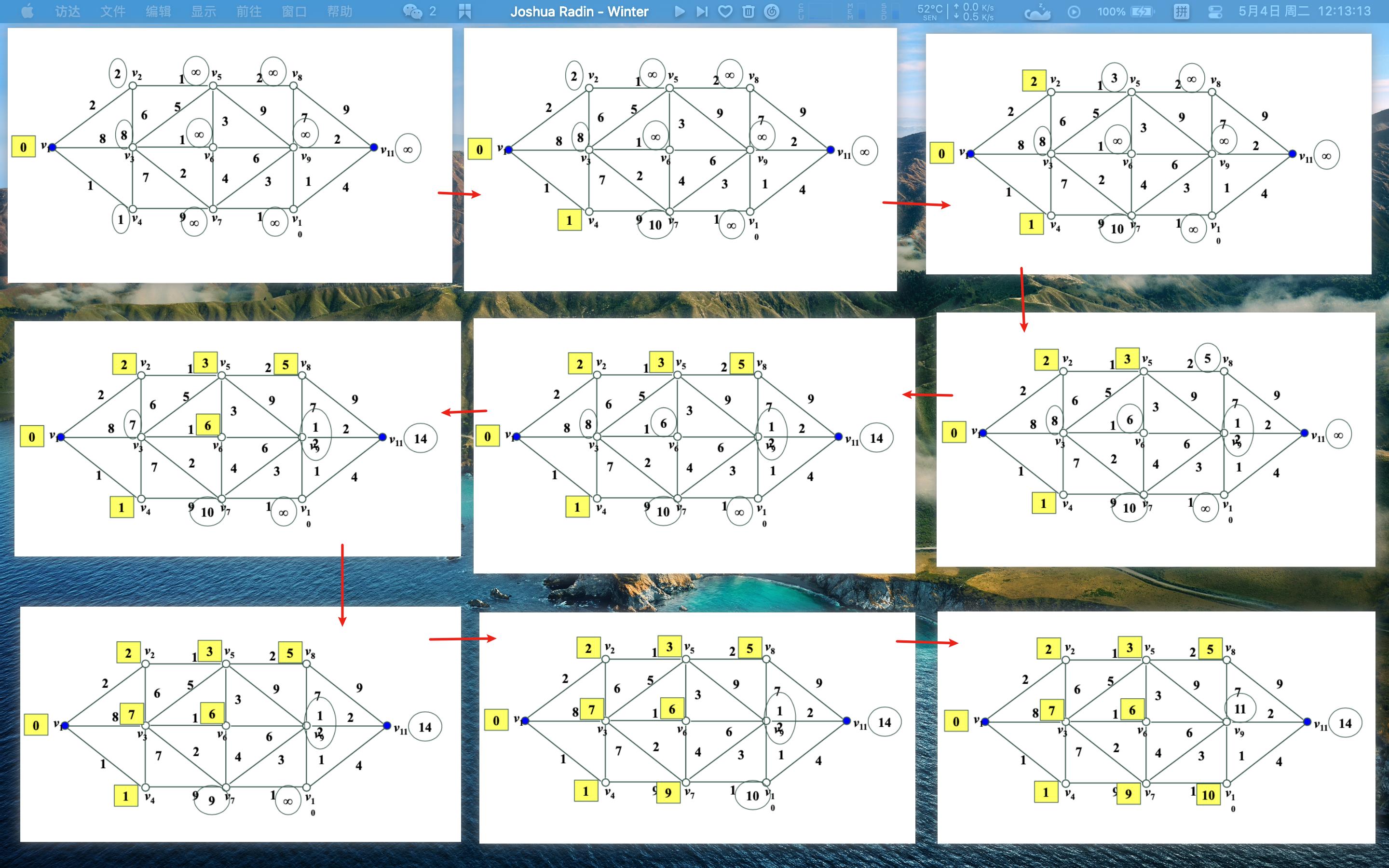

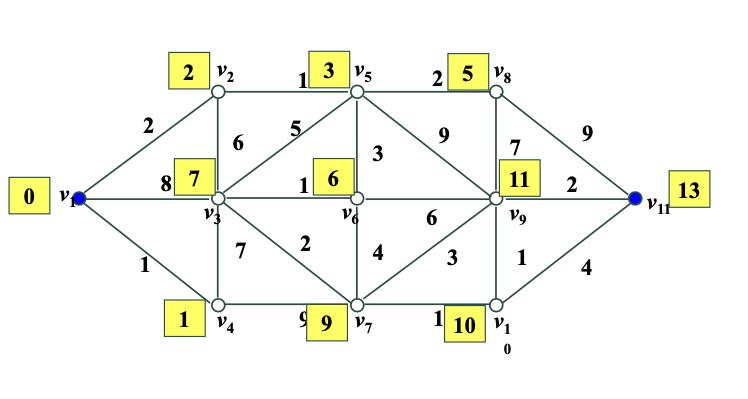
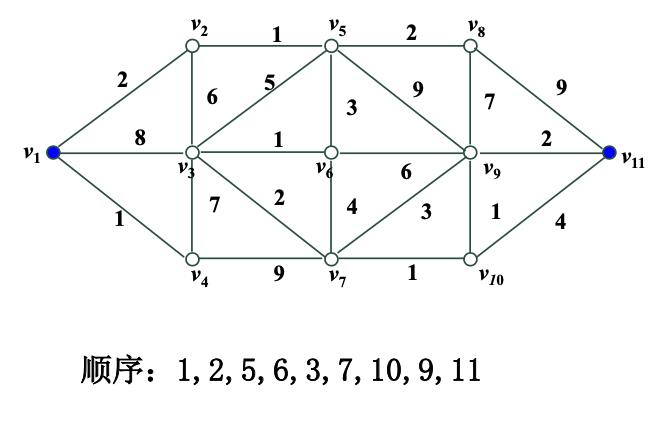
但是一旦路线复杂,这样的问题靠人力思考是很难的。我们于是使用Matlab解决这个问题。在使用Matlab之前,我们先引出一个概念,带权邻接矩阵。
带权邻接矩阵

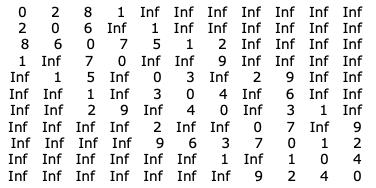
这里的数字,比如首行首列的0,为v1到v1距离。首行第二列的2,为v1到v2的距离。以此类推。
当然,也有单箭头单向模式。
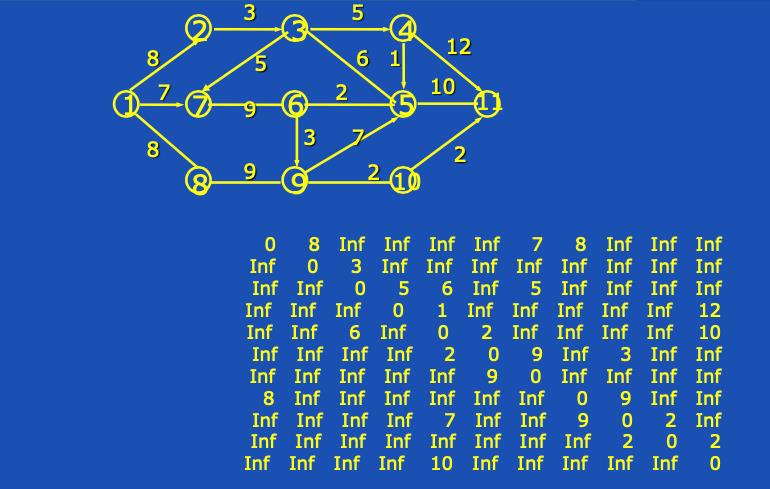
有了这些积累,我们就可以使用Matlab进行编程了。
Matlab代码
function [min,path]=dijkstra(w,start,terminal)
n=size(w,1); label(start)=0; f(start)=start;
for i=1:n
if i~=start
label(i)=inf;
end, end
s(1)=start; u=start;
while length(s)<n
for i=1:n
ins=0;
for j=1:length(s)
if i==s(j)
ins=1;
end,
end
if ins==0
v=i;
if label(v)>(label(u)+w(u,v))
label(v)=(label(u)+w(u,v));
f(v)=u;
end,
end,
end
v1=0;
k=inf;
for i=1:n
ins=0;
for j=1:length(s)
if i==s(j)
ins=1;
end,
end
if ins==0
v=i;
if k>label(v)
k=label(v); v1=v;
end,
end,
end
s(length(s)+1)=v1;
u=v1;
end
min=label(terminal); path(1)=terminal;
i=1;
while path(i)~=start
path(i+1)=f(path(i));
i=i+1 ;
end
path(i)=start;
L=length(path);
path=path(L:-1:1);
我们先将以上代码保存命名为“dijkstra.m”,然后再新建一个脚本输入以下代码:
weight= [0 2 8 1 Inf Inf Inf Inf Inf Inf Inf;
2 0 6 Inf 1 Inf Inf Inf Inf Inf Inf;
8 6 0 7 5 1 2 Inf Inf Inf Inf;
1 Inf 7 0 Inf Inf 9 Inf Inf Inf Inf;
Inf 1 5 Inf 0 3 Inf 2 9 Inf Inf;
Inf Inf 1 Inf 3 0 4 Inf 6 Inf Inf;
Inf Inf 2 9 Inf 4 0 Inf 3 1 Inf;
Inf Inf Inf Inf 2 Inf Inf 0 7 Inf 9;
Inf Inf Inf Inf 9 6 3 7 0 1 2;
Inf Inf Inf Inf Inf Inf 1 Inf 1 0 4;
Inf Inf Inf Inf Inf Inf Inf 9 2 4 0;];
[dis, path]=dijkstra(weight,1, 11)
可将其保存为“tulun.m”。
修改时我们仅需修改tulun.m内的代码中的变量weight以及最下角的1和11这三个。weight的编写参照上文的“带权邻接矩阵”,1代表从v1开始,11代表从v11结束。
代码测试
我们只需要在命令行输入“tulun”即可快速得到结果。
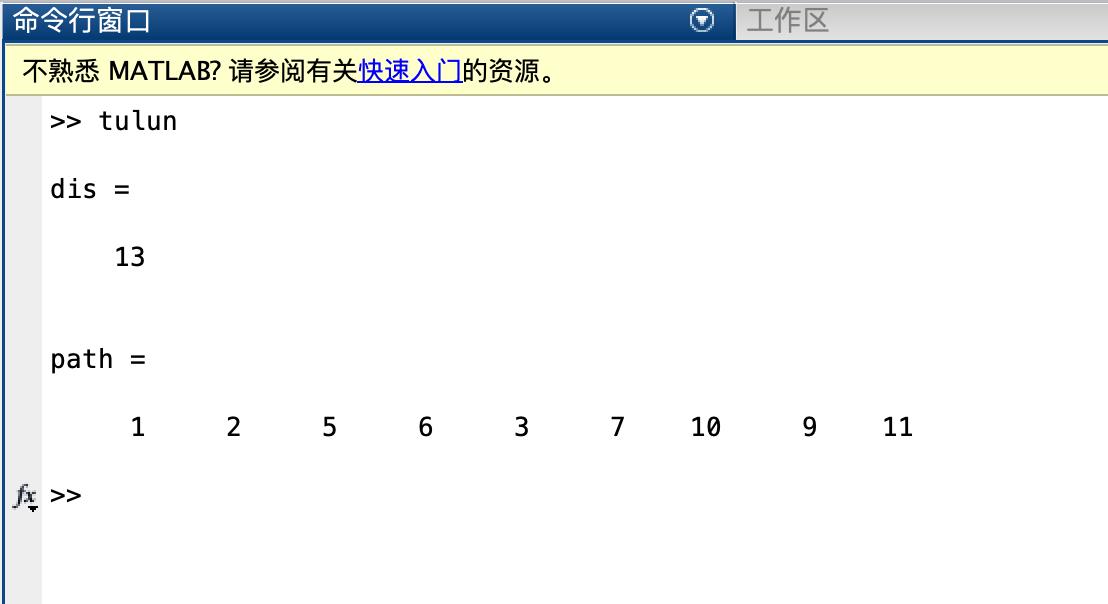
dis为最短距离,path为经过的编号。
以上是关于Matlab:数模04-图论模型(dijstra算法)的主要内容,如果未能解决你的问题,请参考以下文章